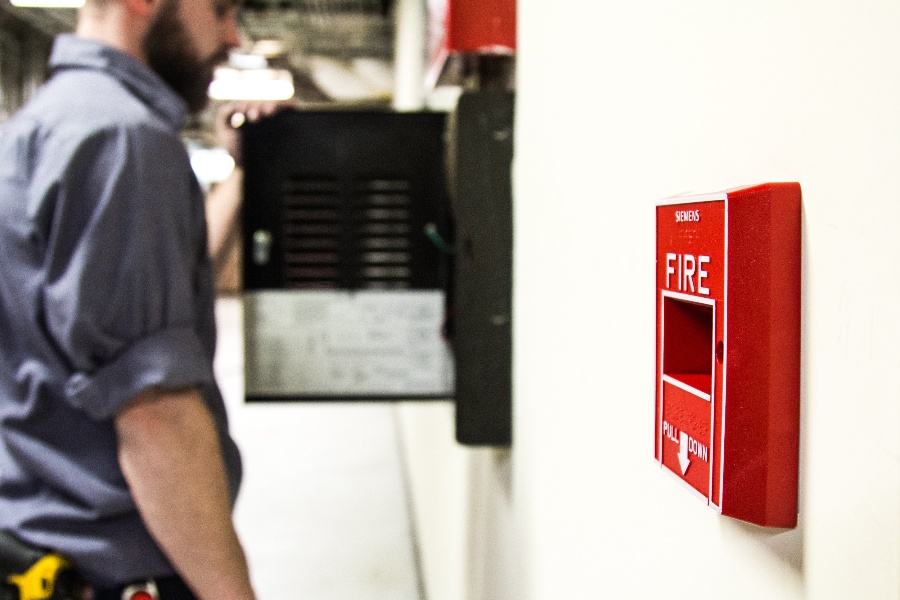
The entire point of a fire protection system is to reduce the impact of a fire on people and property. The system does this by alerting people that there is a fire, keeping them away from dangerous areas, giving them a way to escape the building through emergency exit systems, and ideally, quarantining or even completely suppressing the fire. There are several ways to accomplish this goal, and they fall under two categories: active systems and passive systems.
Active Fire Protection
Active systems serve two functions:
- Taking action to prevent the spread of fire
- Alerting people that there is a fire taking place
These systems can detect fire in different ways, usually by sensing smoke or heat. Some parts of an active system include:
Smoke Control
Smoke is dangerous on its own, causing harm to the respiratory system, blocking visibility, and damaging the building itself. Fans, automatic doors, and shutters can work together to redirect and stop the flow of smoke.
Automatic Fire Sprinklers
These work to extinguish the fire by spraying water. They can either be “wet pipe” fire sprinklers, which have water in the pipes at all times, or “dry pipe” sprinklers, which only fill the pipes as needed.
Fire Suppression Systems
Some facilities, such as labs with sensitive electronics, could be damaged by water spraying as much as they could by fire spreading. In these cases, fire suppression systems that spray chemicals, cleaning agents, or even carbon dioxide (CO2) may be preferable.
Standpipes
These are pipes built into a building that firefighters can use to connect hoses and suppress or extinguish a fire.
Fire Alarm Systems
These alarm systems play a dual role. The first role is to activate any fire suppression, sprinkler, or smoke control systems. The second role is to alert occupants to the presence of a fire.
Fire Command Systems
Having organized, detailed plans for dealing with fire and maintaining clear communication channels saves lives and property.
Passive Fire Protection
Passive systems do not have active components, but they still assist in the suppression or extinguishing of a fire and aid escape.
Doors, Walls, Floors, Ceilings
Barriers prevent the spread of fire and smoke. The doors, walls, floors, and ceilings of a building can be made fire-resistant, a metric usually rated in hours. For example, a one-hour-rated door would be able to prevent the spread of fire for one hour. Compartmentalizing the fire keeps it from spreading, but only if there aren’t too many penetrations through barriers. If a fire-resistant door has a pass-through for any reason, it can’t do its job.
Smoke Barriers
These are continuous membranes that prevent the spread of smoke. Combined with a smoke control system, smoke can be almost completely contained.
Active vs. Passive Systems
To know which systems are right for your building, you should consider several factors, including:
- Building size, height, and layout
- Whether the system needs to run all of the time or part-time
- Local fire codes
- Types of materials in your building (electronics, antiques, art, books, etc.)
Not every building needs all fire protection methods. To ensure you’re protecting your building and the people inside, talk to Koorsen Fire & Security about your options today!


